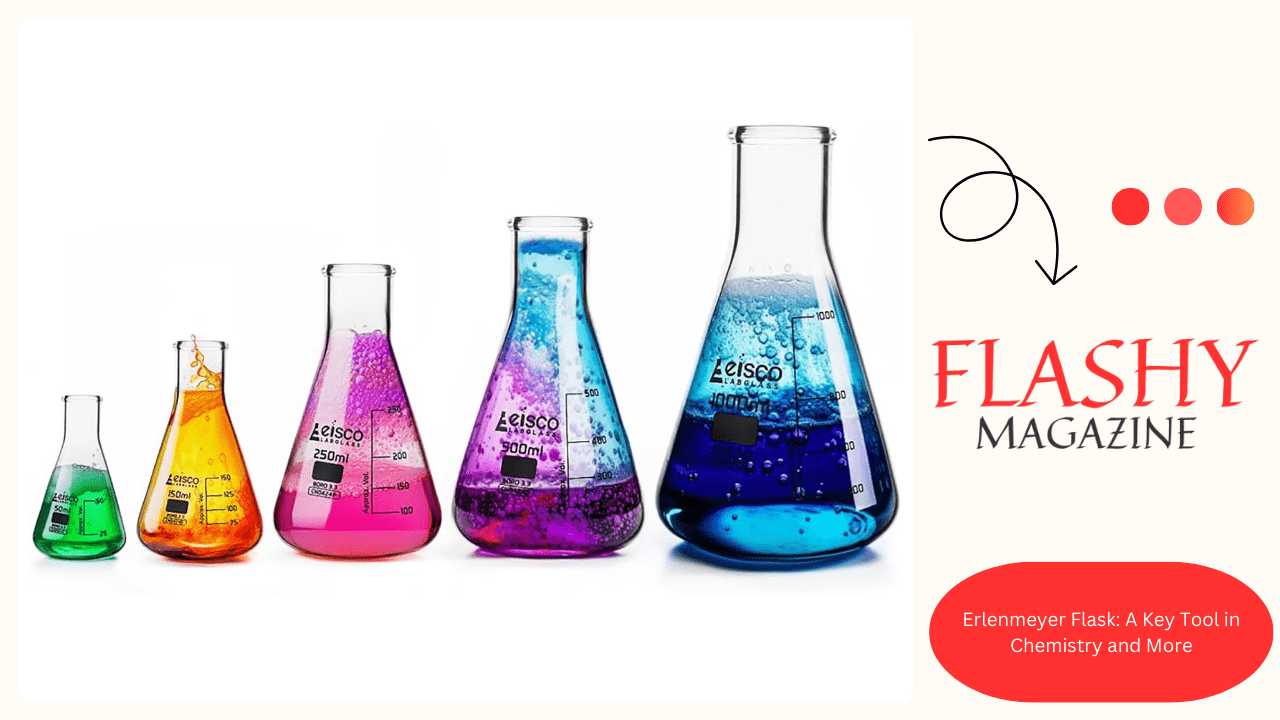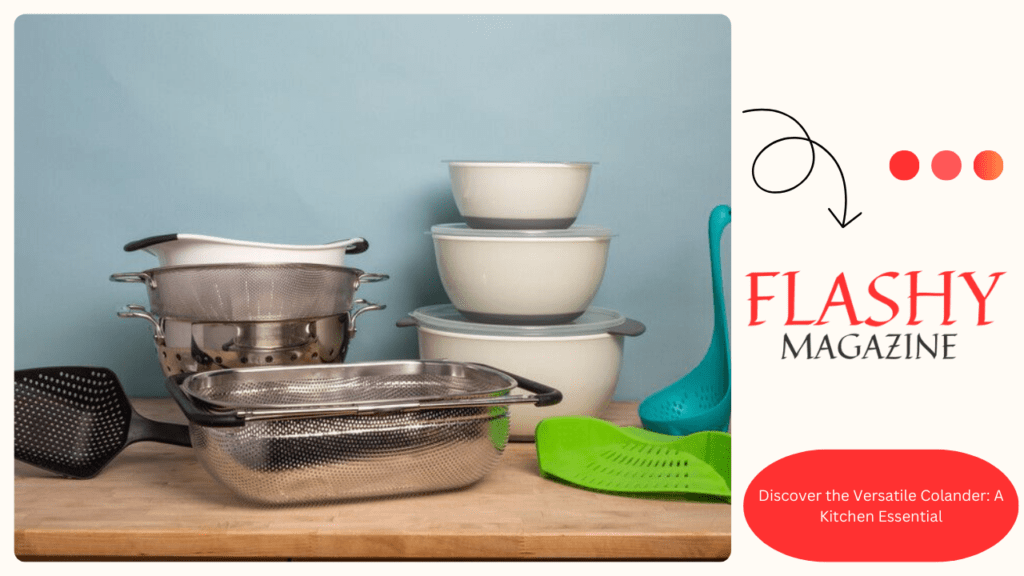The Erlenmeyer Flask, also known as a conical beaker or titration beaker, is one of the most familiar pieces of laboratory dinnerware. Recognizable by its narrow neck, flat bottom, and conical shape, the Erlenmeyer beaker plays an essential part in scientific laboratories, especially in chemistry, biology, and medical exploration. Its unique design not only makes it ideal for mixing, hutting and storing liquids, but has also come a standard tool in classrooms, laboratories and indeed kitchens for creative culinary uses.
Preface to the Erlenmeyer Flask
The Erlenmeyer beaker with its distinctive conical shape and narrow neck is an essential part of laboratory outfit. Aimed at scientists, preceptors and scholars, it provides a dependable tool for handling chemicals, results and natural samples. Beyond its scientific operations, this beaker has set up a place in the worlds of education, assiduity, and indeed the culinary trades, proving its versatility and value as a tool that enhances safety, delicacy, and convenience.
History and Origin of the Erlenmeyer Flask
The Erlenmeyer Flask was constructed by the German druggist Emil Erlenmeyer in 1860. He designed the beaker to ameliorate safety and grease laboratory procedures, especially chemical conflation and titration. The Erlenmeyer design was revolutionary because the conical shape reduced the threat of spillage during shifting and heating, a common problem with teacups and other open holders. Since also, the Erlenmeyer beaker has come an necessary tool in wisdom, praised for its simplicity, functionality and ease of use.
Construction and Structure of the Erlenmeyer Flask
Erlenmeyer Flask design includes a flat bottom, wide body, and narrow neck, frequently with scale marks for approximate measures. The narrow neck of the beaker allows it to be fluently closed or covered with a breach, which reduces the possibility of impurity and allows for safer storehouse of liquids. The conical shape also provides stability, prevents tilting and makes it easier to swirl or mix results without the threat of spillage.
Material Types of Erlenmeyer Flasks
Erlenmeyer Flask are made from a variety of accoutrements , with each type suitable for different operations.
Glass Erlenmeyer Flasks
Glass Flasks are generally made of borosilicate glass, a durable material resistant to thermal shock. This makes them suitable for heating and chemical responses. The glass steins are clear and allow druggies to observe changes in the result.
Plastic Erlenmeyer Flasks
Plastic Erlenmeyer Flask, frequently made of polypropylene or polycarbonate, are lighter, shatter- resistant, and generally more affordable than glass steins. These are frequently used for general mixing and storehouse, but are less ideal for high temperature operations.
Advantages of Using an Erlenmeyer Flask
The design of the Erlenmeyer beaker offers several advantages:
- Easy Mixing: Conical shape allows smooth mixing without splashing.
- Heat Comity: Glass Flasks can handle direct heat, making them ideal for cuisine and vaping.
- Reduced Threat of Impurity: The narrow neck allows for a secure check and prevents impurity.
- Effective Storehouse: The flat bottom and compact shape make it easy to store and mound the steins when not in use.
Common Laboratory uses for Erlenmeyer Flasks
Erlenmeyer Flask are extremely protean and are used for a variety of laboratory:
Purposes Mixing and Swirling Results
The shape of the beaker is ideal for mixing and swirling results, allowing indeed distribution of substances without spillage.
Heating and Boiling Liquids
In chemistry laboratories, Erlenmeyer steins are frequently used to toast liquids because the narrow neck reduces evaporation and prevents splashing.
Carrying Out the Titration
In titrations where one result is added to another until the response reaches completion, the shape of the Erlenmeyer beaker is ideal for observing changes while precluding spillage.
Operations in Chemistry
In chemistry, Erlenmeyer steins are used for a variety of tasks, including acid- base titrations, medication of chemical results, and responses taking heating. The design allows scientists to safely handle unpredictable or reactive chemicals while reducing evaporation losses, which is crucial to maintaining the delicacy of trials.
Operations in Biology and Microbiology
In microbiology, Erlenmeyer steins are used to cultivate microbial societies and hold growth media. The shape of the beaker allows for effective aeration, which is vital in cell culture as it promotes optimal growth conditions. When shaken, the conical shape maximizes oxygen transfer, which benefits organisms that thrive in an oxygenated terrain.
Industrial and Product Use
Erlenmeyer Flask are used in artificial settings, especially in medicinal and chemical product. They’re used for quality control testing, exploration and development, where the delicacy and continuity of the bottle make it a dependable choice.
Erlenmeyer Flasks in Educational and Tutoring Laboratories
In the educational terrain, Erlenmeyer Flasks are common in chemistry and biology laboratories. scholars use them to exercise introductory laboratory ways, including mixing, measuring and hutting substances. Their ease of use and continuity make them suitable for youthful scholars just starting out with wisdom trials.
Sterilization and Conservation of Erlenmeyer Flasks
Proper conservation is essential for Erlenmeyer steins, especially in microbiology and medical exploration where sterility is essential. Glass steins can be castrated using an autoclave, which uses high- pressure brume to remove contaminations. Plastic steins, on the other hand, may not be suitable for autoclaving and are generally disposed of or castrated using chemical detergents.
Erlenmeyer Flasks in the Culinary World
Erlenmeyer Flasks have set up unconventional uses in the culinary trades. Cookers occasionally use them to mix and measure constituents or produce unique donations for gravies and drinks. The conical shape of the beaker makes it easy to pour without discovering and adds a scientific touch to cuisine and donation.
Erlenmeyer Flask vs. Other Laboratory Dinnerware
Compared to teacups and graduated cylinders, Erlenmeyer Flasks offer superior versatility. Their narrow necks reduce the threat of spillage, making them a safer choice for mixing and storing unpredictable chemicals. Unlike teacups, which have wide openings, the phased shape of the beaker helps retain vapors and prevents evaporation.
Special Erlenmeyer s Flasks and Their Variations
There are colorful variations of the traditional Erlenmeyer Flask, each designed for specific operations:
Confused Erlenmeyer Flasks
Thwarted Flasks have depressions along the inner walls that produce a more turbulent inflow during mixing. This design is ideal for cell culture and microbial growth as it increases oxygen transfer and nutrient mixing.
Erlenmeyer Flasks with Wide Mouth
Wide neck steins are easier to clean and are more suitable for operations where rapid-fire mixing is needed. They’re frequently used in laboratories that work with thick results or large quantities of liquids.
Choosing the Right Erlenmeyer Flask for Your Requirements
The ideal Erlenmeyer beaker depends on the intended use. Glass steins are more suited for high temperature operations, while plastic steins are better for general storehouse and mixing. For natural operations, thwarted Erlenmeyer steins offer optimal aeration and ameliorate cell culture results.
Erlenmeyer Flasks in Environmental Testing
Environmental testing laboratories use Erlenmeyer steins to collect and dissect soil, water, and air samples. Their shape and capability to seal tightly make them ideal for storing samples that need to be transported or kept free of impurity.
Preventives When Using Erlenmeyer Flasks
Although the design of the Erlenmeyer beaker increases safety, druggies should still follow stylish practices. Wear defensive gloves when handling heated steins and avoid sealing them tightly, as feasts may accumulate and increase pressure. In addition, always check the glass steins for cracks, as this can lead to breakage due to heat.
The Part of Erlenmeyer Flasks in Scientific Invention
The Erlenmeyer Flask has played a vital part in numerous scientific discoveries. Its use in titrations, microbial societies, and chemical conflation has advanced our understanding of chemistry and biology. Scientists have used it in groundbreaking studies, from the development of new antibiotics to the conflation of complex chemicals, pressing its significance to scientific progress.
Conclusion: Erlenmeyer Flask Reference and Significance
The Erlenmeyer Flask remains one of the most familiar and protean tools in laboratories around the world. Created further than 150 times agene , its design continues to meet the evolving demands of wisdom, education and indeed the culinary trades. As technology advances, the Erlenmeyer beaker endures as a testament to the significance of functional and dependable tools in fostering scientific discovery and invention. Whether in high- tech laboratories or high academy classrooms, the Erlenmeyer beaker’s donation to wisdom education and exploration makes it an inestimable resource that’s sure to remain applicable for generations.
Constantly Asked Questions
- Why is the Erlenmeyer Flasks shaped the way it is?
The conical shape is ideal for slip-free mixing and provides stability, while the narrow neck reduces the threat of impurity.
- Can Erlenmeyer Flasks be used for heating?
Yes, glass Erlenmeyer Flasks are heat resistant and suitable for hotting liquids and carrying out responses.
- What’s the Erlenmeyer Flask with partitions used for?
Thwarted Erlenmeyer Flasks increase oxygen transfer, making them ideal for cell societies and microbial growth.
- Are plastic Erlenmeyer Flasks safe for chemicals?
They’re safe for certain chemicals, but plastic Flasks are generally not suitable for strong detergents or high temperature operations.
- How do I emasculate an Erlenmeyer Flask?
Glass Flasks can be autoclaved, while plastic bottles may bear chemical detergents depending on material comity.








